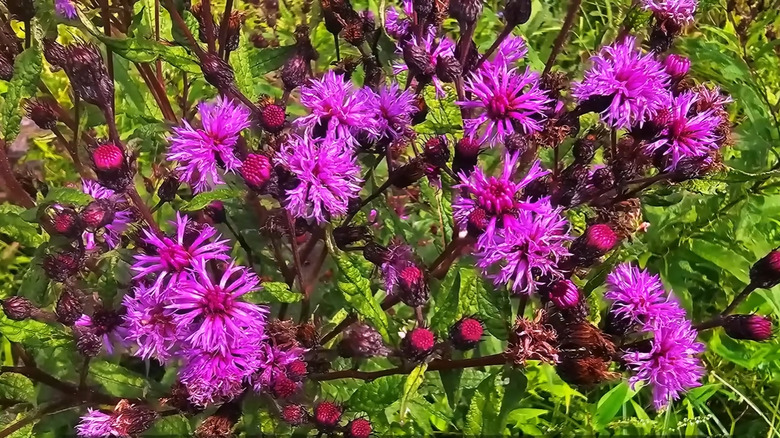The 2026 Plant Of The Year Will Become A Flimsy Mess If You Make This Mistake
One of the best ways to grow a healthy garden is to choose plants that match the growing conditions in your yard. But then again, part of what gardeners do is push the limits of plants and climate regions by adding soil amendments, watering regularly, and even providing frost protection. While this works for many different types of plants and garden designs, sometimes it's a mistake. For instance, if you give drought-tolerant native plants like the 2026 plant of the year, Vernonia lettermannii 'Iron Butterfly', too much fertilizer, you could end up with a flimsy mess.
One of the best plants to grow for a biodiverse garden, Vernonia lettermannii 'Iron Butterfly', is a type of ironweed. It's the perfect example of a plant that doesn't like to be smothered. Hardy in USDA Hardiness Zones 4 to 9, it was selected as plant of the year for its fall nectar supply and ecological benefits. It's a plant that designers use in naturalistic landscapes and prairie gardens. Vernonia lettermannii 'Iron Butterfly' is well known for its compact structure, feathery leaves, and bright pink mounds of flowers. With its low-maintenance requirements, it doesn't require a lot of care and will thrive in the right conditions, providing plenty of nectar for migrating hummingbirds in late summer and fall.
Learn more the fertilization and soil needs of 'Iron Butterfly' ironweed
The Garden Club of America's plant of the year is one of the cultivars we predict will be trending in gardens for 2026, and it's going to be right at home with drought-tolerant native grasses and other wildflowers that provide seasonal color. One of the benefits of growing native prairie garden plants like 'Iron Butterfly' is that they don't require inputs like fertilizers. Unlike your lawn or the vegetable garden, native plants are well-adapted to poor soils. In many cases, since most soils are adequate, it's better not to fertilize at all until you see how the plant adapts to your soil. However, if your soil is very poor, you may need to use a small amount of slow-release fertilizer in the spring. If 'Iron Butterfly' gets leggy in your garden, whether it's due to fertilizer, not enough sun, or too much water, you can cut it back by up to one-third to try and keep it from falling over.
Whether you choose to grow 'Iron Butterfly' for its mounds of pink blooms or because it attracts songbirds and beneficial insects to your yard, native plants are eco-friendly and sustainable precisely because they don't require fertilizer. By letting them grow naturally in your yard, you're promoting biodiversity in your garden without spending more time or money.

